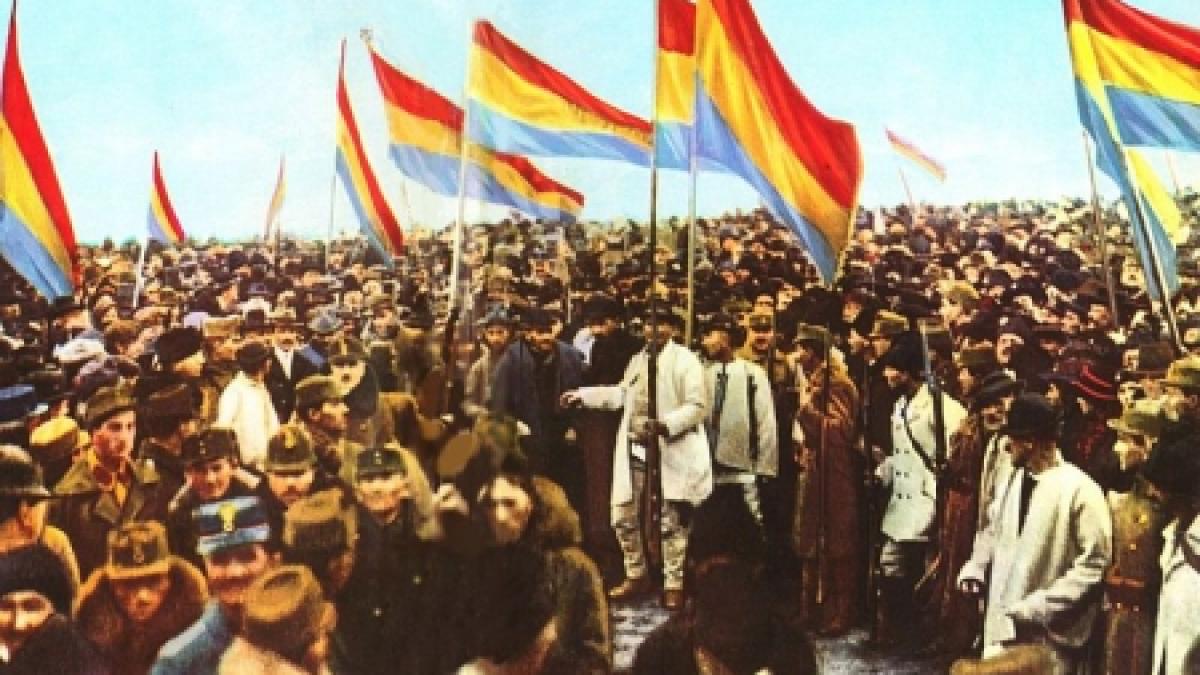
Today, May 27, 2013, Antena 3 and fabricadesteaguri.eu will ofer Romanians the best beatiful gift: the largest flag in the world.
Under this framework, we continue to present you the history of the Romanian flag.
History:
The national flag of Romania is a tricolor with vertical stripes. According to the Constitution of Romania, the colors are arranged vertically, in the following order from the flagpole: blue, yellow, red. " Law no. 75/1994 states that the national flag strips have the colors cobalt blue, chrome yellow and Vermion red.
According to a popular legend on the Romanian territory, the colors red, yellow and blue would have been used since ancient times by the Romanians as a symbol of theirs or by others to designate them.
The colors are found on the diplomas issued by Michael the Brave, the shields and flags. As until the begining of the XIX the idea to form a nation existed only in the hearts of a few scholars such as Grigore Ureche, these colors have not been used to identify the Romanians in particular and the flags of the Romanian countries have been inherited sice the Middle Ages , bearing heraldic symbols unrelated to the modern idea of "nation.
The flag is a symbol of the Romanian nation since early nineteenth century. The presence of the three colors can be noticed on the tassels and paintings on the canvas of Tudor Vladimirescu rebellion flag when their first meaning was assigned to them: "Liberty (the blue sky), Justice (the yellow of fields), Brotherhood ( bloody red)"
The flag was first adopted in the Romanian Country, in 1834, as a battle flag, when the reformist ruler Alexandru D. Ghica submitted to the approval of Sultan Mahmud II , the flag pattern and the battleship flags. This pattern was a "flag with the red, blue and yellow, it also had stars and that bird’s head in the middle." Soon, the order of colors was changed, for yellow to appear in the center.
The 1866 Constitution of Romania provided in Article 124 that : "The Colors of the United Principalities will be Blue, Yellow and Red." The order and the display of the colors were established by the House of Representatives at the meeting of 26 March 1867. The colors of the flag were placed vertically. The country’s emblem was placed only on the army’s flag and on the princely flags in the middle, the civilian flag lacked it. The same distinction was made for the Navy’s war and civilian flags..
After the completion of Great Romania, the official flag will continue to be tricolor with vertical stripes and without an emblem at the center.
the Constitution of the Socialist Republic of Romania, adopted in 1965, provides in Article 118 that: "The flag of the Socialist Republic of Romania is red, yellow and blue, arranged vertically with blue near the flagpole. In the middle sits the emblem of the Socialist Republic of Romania ".
Heroic action under the Romanian flag
During the War of Independence of 1877-1878, the Romanian soldiers heroism was constantly stimulated by the Romanian flag. In the attack on August 30, 1877, Nicolae Valter Mărăcineanu died on duty while sticking in the Grivita parapet the Regiment’s flag. The soldiers of the 3rd Regiment cavalry entered first in Plevna, swimming across the Void river, with the flag on their foreheads.
The World War I witnessed some sacrifices made to defend the battle flag, as a symbol of the duty to protect the land of the country and of the military honor. The Flags guard belonging to regiment 83 infantry „Neagoe Basarab” battled a German patrol in 1916. Despite having an arm cut off, the flag carrier remained on the battlefield until the other soldiers have come to his rescue and saved the flag.
During War World II, the flags of the units who fought bravely were decorated.
The flag’s protocol
The Romanian flag must fly permanently on the buildings and premises of public authorities and institutions, the headquarters of political parties, trade unions, educational and cultural institutions at border crossing points and in airports .
The Romanian flag can be temporarily hoisted in other public places on the occasion of the Romanian national day and on other national holiday , set by the local authorities during the festivities and official ceremonies with local, national and international character, in the places where they are being held.
The Romanian flag can be flown without any constraints by individuals in their homes or residences, or by legal persons at their headquarters.
The Government is the only body that sets national mourning days, when the Romanian flag is flying at half-mast.
Other countries flags may be displayed in Romania only accompanied by the national flag and only on the occasion of official state visits, of festivities and international meetings on official buildings and public places established in compliance with Law no. 75/1994. In this case, the Romanian flag occupies the place of honor, ie the center .
The flag of the European Union is displayed at the left of the Romanian flag.
The flag of battle is taken out from the window to be displayed at military oath ceremonies, troops parades, at surrendering or taking up a unit’s command , while giving military honors in military funerals, and other occasions when it is ordered so.
Source: Wikipedia.org



















